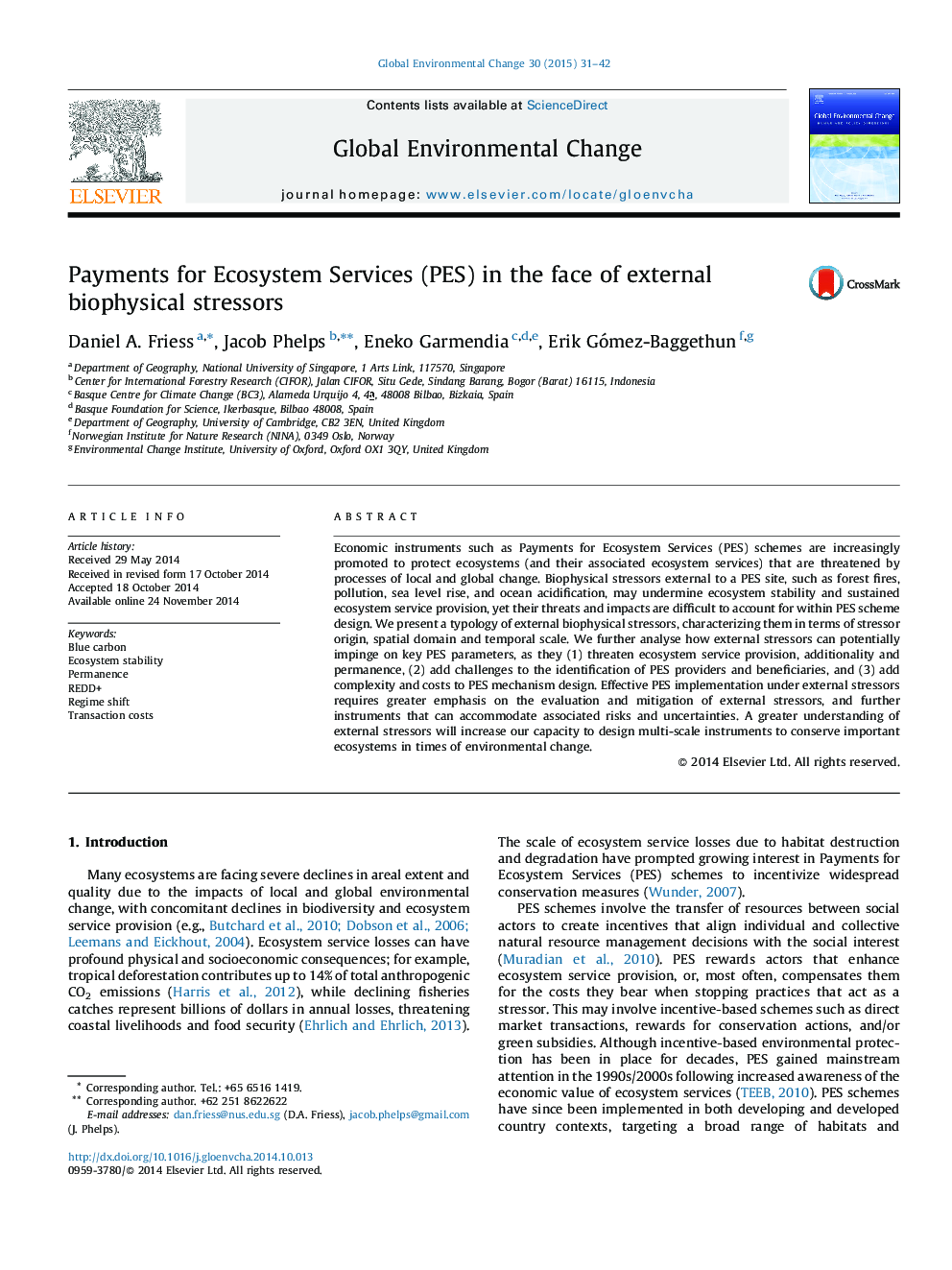| Article ID | Journal | Published Year | Pages | File Type |
|---|---|---|---|---|
| 1054667 | Global Environmental Change | 2015 | 12 Pages |
•PES is increasingly used to conserve threatened ecosystems.•External stressors outside of PES control affect ecosystem service provision.•External stressors vary in origin, spatial and temporal scale.•External stressors substantially complicate PES transactions and design.•PES requires integrated management to evaluate, mitigate and accommodate stressors.
Economic instruments such as Payments for Ecosystem Services (PES) schemes are increasingly promoted to protect ecosystems (and their associated ecosystem services) that are threatened by processes of local and global change. Biophysical stressors external to a PES site, such as forest fires, pollution, sea level rise, and ocean acidification, may undermine ecosystem stability and sustained ecosystem service provision, yet their threats and impacts are difficult to account for within PES scheme design. We present a typology of external biophysical stressors, characterizing them in terms of stressor origin, spatial domain and temporal scale. We further analyse how external stressors can potentially impinge on key PES parameters, as they (1) threaten ecosystem service provision, additionality and permanence, (2) add challenges to the identification of PES providers and beneficiaries, and (3) add complexity and costs to PES mechanism design. Effective PES implementation under external stressors requires greater emphasis on the evaluation and mitigation of external stressors, and further instruments that can accommodate associated risks and uncertainties. A greater understanding of external stressors will increase our capacity to design multi-scale instruments to conserve important ecosystems in times of environmental change.
